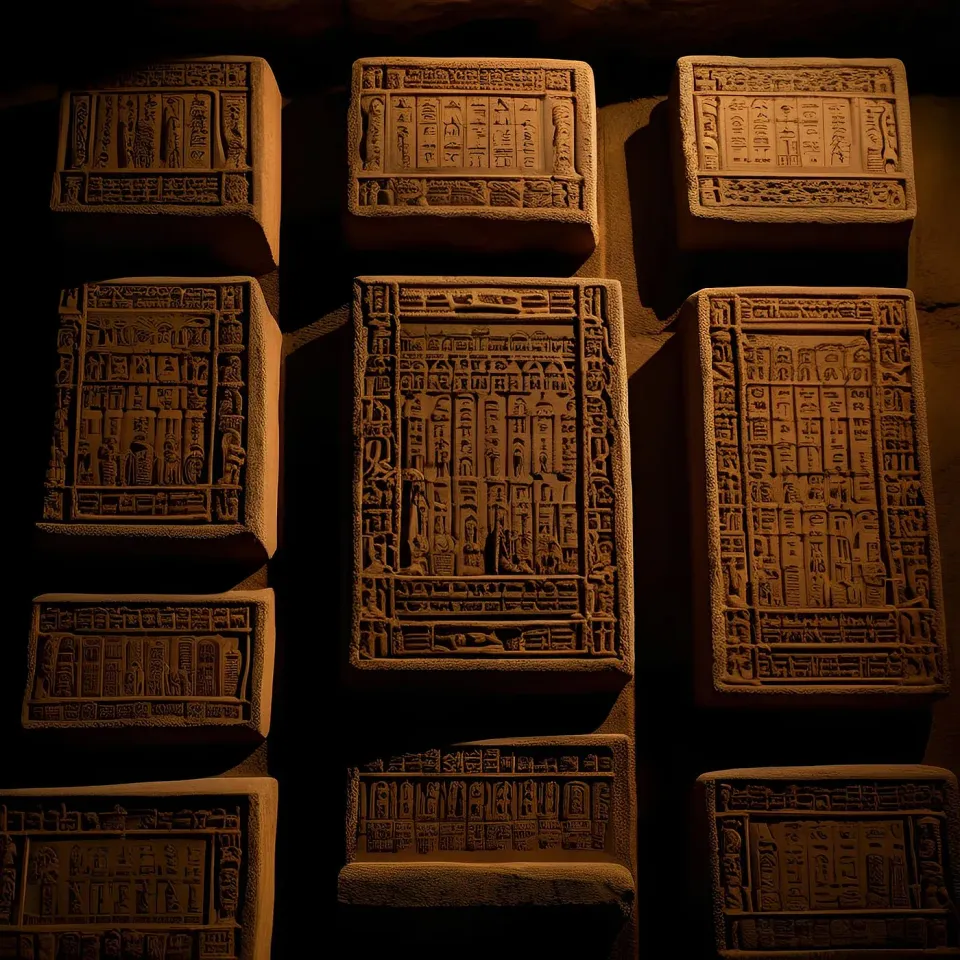Jesus Walking on Water As A Developing Tradition
The Gospels as a Developing Tradition Pt II

History is clear that Jesus was known for his healing ministry. Often paired with his healings are Jesus’ miracles. Miracles and healings are so intertwined in Jesus’ ministry they are most often spoken of interchangeably.
I AM JAMES GÓMEZ is a reader-supported publication. To receive new posts and support my work, consider becoming a free or paid subscriber.
A simple Google search of the phrase ‘Jesus healings and miracles’ will provide 19,500,000 results. It seems quite a few people on the internet have an opinion on Jesus’ miracles. To narrow down from 19,500,000 opinions of Jesus’s miracles, let’s start by recognizing the gospels contain approximately 37 miracles performed by Jesus.
Of those 37 miracles, if Jesus had a list of his ‘greatest miracles/healings,’ his top three, in no particular order, would most likely be:
- Raising people from the dead.
- Multiplying loaves and fishes.
- Walking on water.
In today’s article, we will focus on Jesus’ walking on water as another case study in understanding the gospels as a developing tradition.
For a crash course in understanding what I mean by a developing tradition please check out my article The Gospels As A Developing Tradition.
Jesus walking on water appears in three gospels (Mark 6:45-52, Matthew 14:22-33, and John 6:16-21). For the sake of this discussion, we will be focusing on Mark and Matthews’ versions of this narrative.
Mark’s Version of Jesus Walking On Water
45 Immediately he made his disciples get into the boat and go on ahead to the other side, to Bethsaida, while he dismissed the crowd. 46 After saying farewell to them, he went up on the mountain to pray.
47 When evening came, the boat was out on the lake, and he was alone on the land. 48 When he saw that they were straining at the oars against an adverse wind, he came towards them early in the morning, walking on the lake. He intended to pass them by. 49 But when they saw him walking on the lake, they thought it was a ghost and cried out; 50 for they all saw him and were terrified. But immediately he spoke to them and said, ‘Take heart, it is I; do not be afraid.’ 51 Then he got into the boat with them and the wind ceased. And they were utterly astounded, 52 for they did not understand about the loaves, but their hearts were hardened.
As we can see in Mark’s version of this story, the narrative is kept brief and compelling. This aligns with a theme weaved throughout Mark of the author creating a sense of urgency for the reader. We see this in how the author transitions from one narrative to the next using the phrase “immediately.” They also tend to keep their narratives concise and to the point. Mark is focused on telling what someone needs to know about Jesus to believe and follow him. There isn’t a lot of ‘fluff’ seen in Mark.
To help with contrasting Mark’s version to Matthew’s, let’s make a helpful list of the details in Mark’s walking on water narrative:
- The story takes place at night
- It also happens on the sea
- The disciples are in a boat without Jesus
- The wind is blowing against them, and they are distressed
- The disciples see what they initially believe is a ghost
- Jesus, in verse 50, tells the disciples, “Take heart, it is I; do not be afraid.’“
- Jesus enters the boat, the wind stops, and the storm ends.
- Mark then narrates how the disciples were astonished and puzzled, and ‘their hearts were hardened.’
Two things worth noting as we wrap up Mark’s version is how only Jesus is described as the one walking on water. The other detail is how the story ends with the disciples being seen in a less-than-ideal light. Verse 50 tells us that before this miracle, the disciples saw Jesus multiply loaves to feed the multitudes. The disciples experienced two of Jesus’ “big three” miracles, and as Mark tells us, they walked away with their hearts hardened.
Matthews Version of Jesus Walking On Water
22 Immediately he made the disciples get into the boat and go on ahead to the other side, while he dismissed the crowds. 23 And after he had dismissed the crowds, he went up the mountain by himself to pray. When evening came, he was there alone, 24 but by this time the boat, battered by the waves, was far from the land,[a] for the wind was against them. 25 And early in the morning he came walking towards them on the lake. 26 But when the disciples saw him walking on the lake, they were terrified, saying, ‘It is a ghost!’ And they cried out in fear. 27 But immediately Jesus spoke to them and said, ‘Take heart, it is I; do not be afraid.’
28 Peter answered him, ‘Lord, if it is you, command me to come to you on the water.’ 29 He said, ‘Come.’ So Peter got out of the boat, started walking on the water, and came towards Jesus. 30 But when he noticed the strong wind,[b] he became frightened, and beginning to sink, he cried out, ‘Lord, save me!’ 31 Jesus immediately reached out his hand and caught him, saying to him, ‘You of little faith, why did you doubt?’ 32 When they got into the boat, the wind ceased. 33 And those in the boat worshipped him, saying, ‘Truly you are the Son of God.’
Let’s remember from our discussion on the gospels as a developing tradition that we are working off the belief that Mark was the first gospel written, with Matthew and Luke copying Mark and a Q source when writing their gospels. With this context in mind, we can examine the two significant changes Matthew makes to Mark’s version of Jesus walking on water.
- Peter also walks on water…sort of: Matthew adds Peter as a second person who walks on water. In verses 28-31, Matthew adds an interaction between Jesus and Peter that leads to Peter taking a few steps on the water, freaking out, and sinking.
- Matthew changes the story's ending: Primarily, Matthew changes Mark’s ending to show the disciples in a much better light than hard hearts after seeing two of Jesus’ three biggest miracles. Instead of hard hearts, Matthew changes the ending to, “And those in the boat worshipped him, saying, ‘Truly you are the Son of God.’“ So Mark ends the story with disciples looking like mini-Pharaohs with hardened hearts when confronted with God’s miracles. However, in Matthew, the disciples aren’t hard-hearted; they aren’t even puzzled anymore. Instead, they adore Jesus and worship him as the Son of God.
Well, there’s an obvious question we should be asking at this point.
Which one is it? Were the disciples hard hearted or adoring followers worshiping Jesus as the Son of God?
The difference in the two endings is such a stark contrast that there’s no way to harmonize the two. Mark and Matthew can’t both be right.
Jesus Walking On Water As A Developing Tradition
Based on our premise that Mark came first and Matthew copied Mark and Q in writing his gospel, we need to ask, ‘Why did Matthew make these changes?’
I’m sorry for leaving us with a cliffhanger. We don’t know why Matthew changed Mark. Scholars and Theologians have spilled their fair share of ink speculating about this, but at the end of the day, we don’t know why these changes were made. One prevalent assumption is Matthew didn’t like how Mark ended up with the disciples looking puzzled and confused.
Despite not knowing Matthew’s motivation, what we do know is that this passage illustrates again how the Gospels were written by human authors who felt the freedom to revise the tradition they received. The late New Testament Scholar Marcus Borg explains it this way:
“In addition, this example illustrates a further factor at work shaping the tradition as it develops: the emerging christological images and beliefs of the Christian movement. In this text, Matthew adds the christological title Son of God to a text that did not have it (Mark’s account).” (Jesus at 2000, p. 137)
What we see in Mark is that neither Jesus nor the disciples ever refer to Jesus as the Son of God during Jesus’ lifetime and ministry. Interestingly, in Mark, Jesus was never worshiped during his lifetime either.
Matthew shows us how he projects back into his gospel, developing beliefs about Jesus as they are formed. At the time of Matthew’s writing, Jesus is now being seen as the Christ, which makes him the Son of God, and worthy of worship during his lifetime and ministry. As a result, Matthew takes the creative freedom to revise his walking on water narrative by reading back into it contemporary and developing views from his community that didn’t exist during Mark’s writing.
I AM JAMES GÓMEZ is a reader-supported publication. To receive new posts and support my work, consider becoming a free or paid subscriber.




